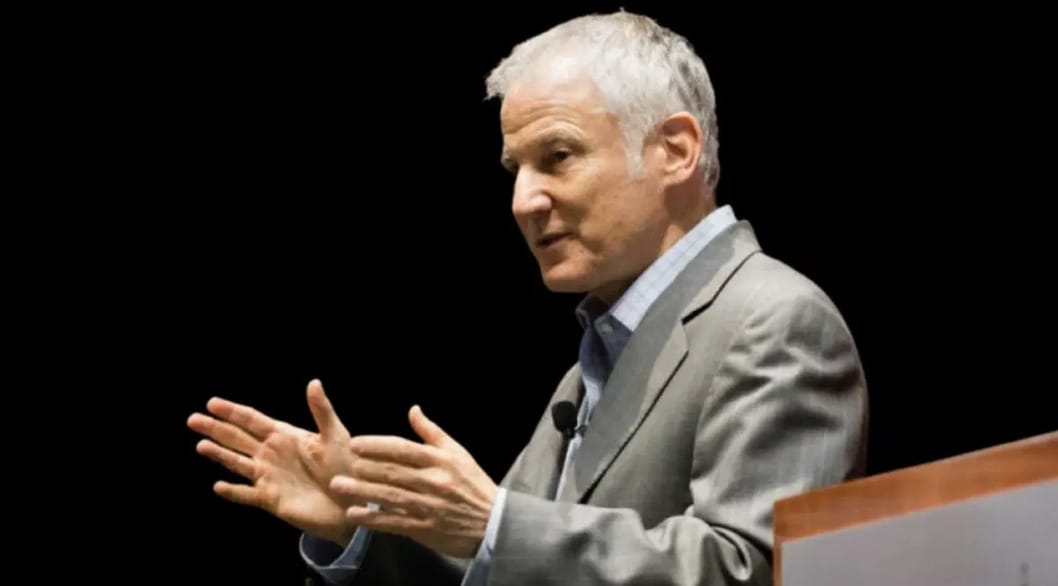Managing the rise of great power competition between the US and China, and not letting it “go off the rails,” is the epochal challenge of our day, according to former US National Security Council member Richard Falkenrath.
“The history is not good on this,” said Falkenrath, now the head of geopolitics and chief security officer at Bridgewater Associates, noting most people in the room had “lived in an anomalous period of great power peace.”
“History, when you go back hundreds of years, is replete with wars, including with wars that were economically illogical, as this one would certainly be,” Falkenrath said.
Falkenrath served in the early 2000s as deputy assistant to the US President and deputy homeland security advisor. He was discussing the impact of geopolitical tensions on economies and markets at the Fiduciary Investors Symposium held in Singapore, in a panel discussion with Ben Weiss, managing director, Asia Pacific, of global business consultancy Veracity Worldwide.
The deterioration of the US-China relationship was underway before former US President Donald Trump “blew it up,” Falkenrath said.
“In a very blunt, crass way he articulated what both sides of the aisle were feeling, and that’s testified by the fact that with the Biden administration, they have reversed none of what he did, expanded it in certain respects and refined its implementation, execution and articulation.”
He said he suspects whoever succeeds Biden will continue this policy of comprehensive competition with China. Managing this without it deteriorating into outright conflict is the epochal question of our day, he said, and the US administration is “struggling” with this.
They “don’t want it to go off the rails, but they also don’t want to be had or humiliated,” Falkenrath said. In the absence of cooperation, both China and the US are capable of exaggerating each others’ power and malevolence, he said.
The United States is completely convinced of its own benevolence, with a one-sided narrative about maintaining peace, prosperity, democracy and a rules-based order, he said. China, like many intelligent observers, rejects that narrative and has constructed an alternative narrative.
It is hard to imagine what the United States could possibly concede to China amidst this narrative, he said.
“There’s not a lot to offer when you think that everything you are offering is already right and just,” Falkenrath said. “And so essentially the rules based system, the free flow of trade and information, the protection of intellectual property, the treatment of minorities, the treatment of the environment, when you think that…you’re conceding that, it gets pretty hard.”
Facing rising tensions without an end in sight, Ben Weiss, Managing director, Asia Pacific, at Veracity Worldwide, said Veracity was speaking to investors about three key issues in the context of rising US-China competition.
First is the importance of scenario planning and building structures inside organisations to interpret developments. Key stakeholders at a very senior level need to be involved. This should involve a worst case scenario of leaving China in a hurry, he said.
“There’s often geopolitical analysis happening within businesses, but it tends to be siloed or influencing very specific parts of the business,” Weiss said.
Second, companies need to assess the level of risk that comes with their exposure to China in light of the vast amount of new legislation and regulation in the United States governing business with China.
Third, companies should engage with the US government and other governments around the world regarding new legislation in the pipeline, as US officials are interested in engaging with businesses to understand their concerns regarding the effects of this legislation, he said. Outbound investment restrictions for US businesses investing in China are “very likely to come,” he said.
“I would just encourage all of you to, in your government affairs, not see that as strictly a Washington or London or Canberra–or any other capital–exercise,” Weiss said. “Certainly the United States government is taking that advice on board.”
MORE ON GEOPOLITICAL RISK
A video interview with geopolitical expert Professor Stephen Kotkin looks at the investor implications of the Russia Ukraine conflict, the recalibration in the US China relationship and where the “real” geopolitical risk lies.
